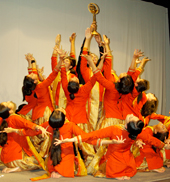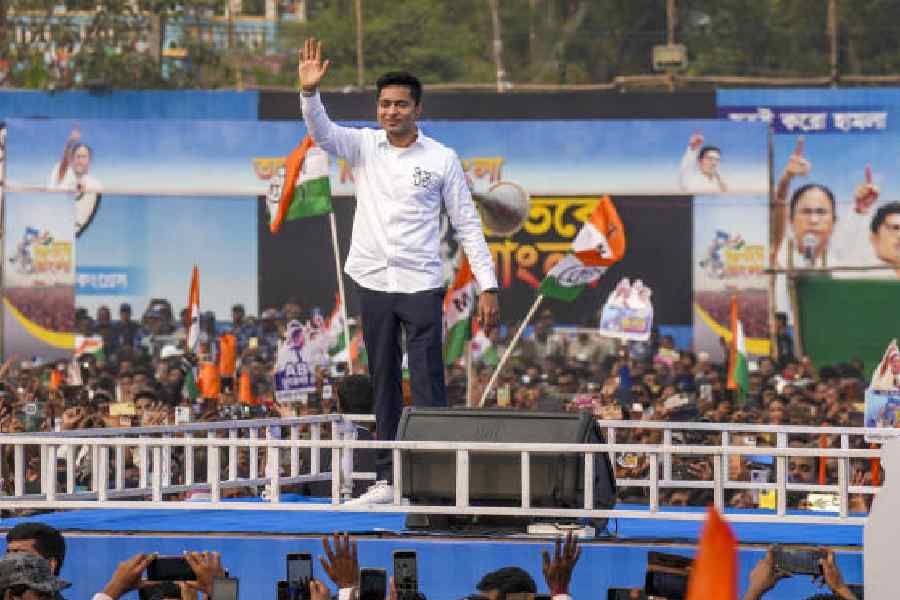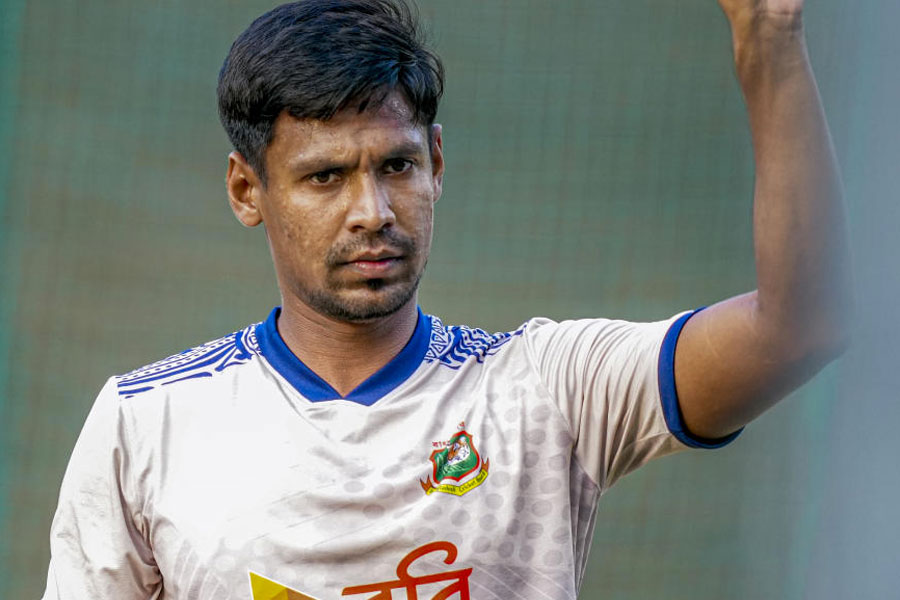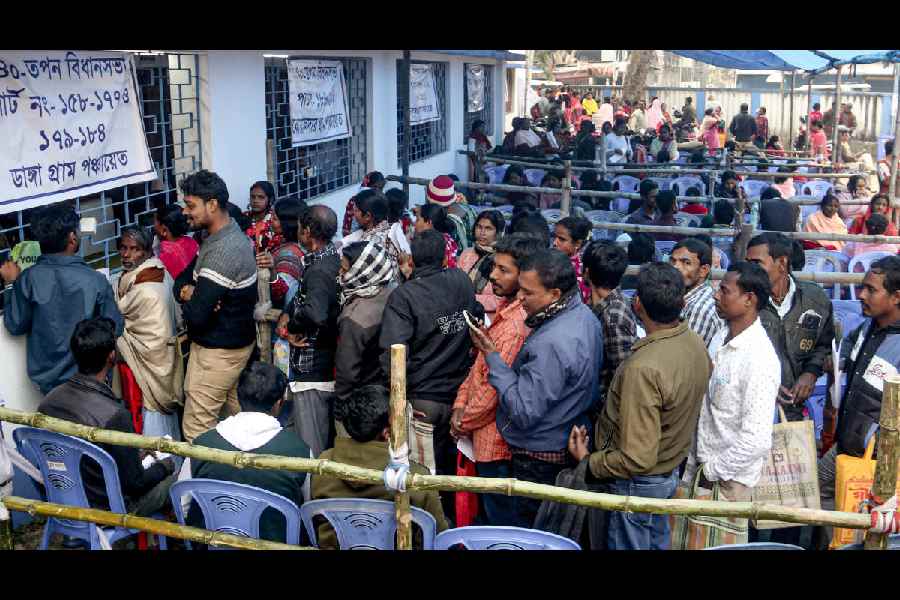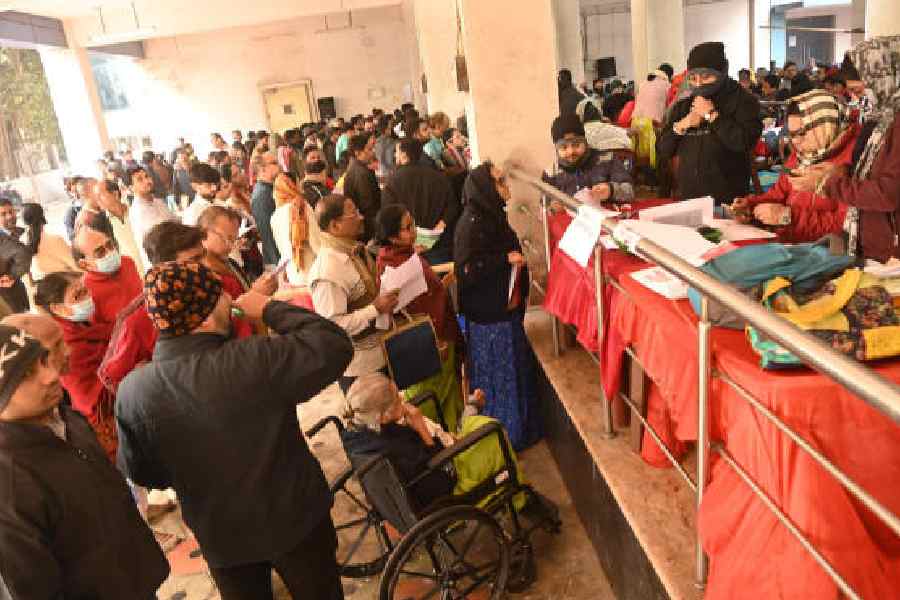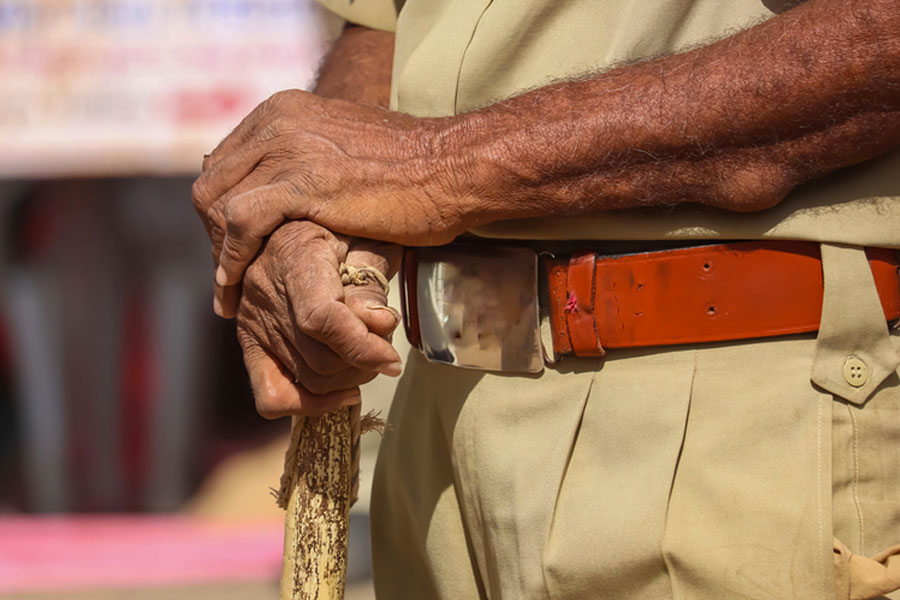 |
| Rehearsals for the inauguration of North American Bengali Conference 2008, to be organised in Toronto on July 4, being held under the baton of choreographer Sukalyan Bhattacharya to a song by Lopamudra Mitra and others. The theme of the recital is “Swadesh Amar Swapno Go”, in tune with rootedness of the expatriate community |
Rain upset the city’s date with Portuguese culture. Only a handful turned up for the two-day exposition organised by the Instituto Camoes – Centro Cultural Portuguese of New Delhi at Max Mueller Bhavan on Tuesday and Wednesday.
The lecture, poetry, music and theatre combo aimed at generating interest in Portuguese language and culture was organised in collaboration with Max Mueller Bhavan and Roop Kala Kendra of Calcutta. The primary participants were students of the Jadavpur University School of Linguistic and Language Technology (SLLT), which is directly financed and run by the Instituto Camoes – Centro Cultural Portuguese.
On Day One, Sovon Sanyal, assistant professor of Portuguese from Jawaharlal Nehru University spoke on the Portugal-Bengal connection in pre-Independent India while Sanjay Mukhopadhyay, the CEO of Roopkala Kendra made an informal address.
The speech was followed by a presentation of a music genre almost synonymous with Portugal called Fado. Students of the SLLT and a local music group called Calcutta Cycle sang Fado in Bengali. The same groups came together for a play on Day Two. A poetry reading session having failed to materialise, the play was moved forward.
Search of the Unknown Island, a short story by Nobel Laureate Jose Saramago, was presented in Bengali as Achin Dweeper Katha and staged quite innovatively by directors Utpal Basu and Amit Roy. Though not connected with SLLT, Basu and Roy are associated with Calcutta Cycle whose music supplements the presentation. In the story, a man sits before the King’s door demanding a boat to go in search of an unknown island. He is joined by the cleaning maid who discovers that sometimes dreaming is the true path to happiness.
Joining the young team of student-actors Arunava, Moushumi, Sandip, Isabel and others was Rita Roy who teaches Portuguese at SLLT. There was a visual projection, dance, plenty of songs sung live with a smattering of Portuguese.
Thrice over
 |
| Rimi B. Chatterjee |
She had just written 10,000 words of her third novel when she was diagnosed with cancer. “I wrote The City of Love while undergoing chemotherapy. Then I was quarantined for a long time because my immunity was down. But that gave me the time I needed to complete the book,” said Rimi B. Chatterjee writer of City of Love published by Penguin in October 2007. Crossword Bookstore on Elgin Road hosted a special reading of the book on June 20 to mark its entry into the shortlist for the Vodafone Crossword Book Award.
The award, to be announced later this year, has been given since 1998 for the best of Indian writing in the categories of English Fiction, English Non Fiction and Indian Language Fiction translations.
The jury including Dilip Chitre, Urvashi Bhutalia, Sukanta Chaudhuri, Geeta Doctor among others, is still out. But on June 20 Professor Supriya Chaudhury of Jadavpur University spoke at length about the exceptional academic and creative talent of her past student Rimi, who is now a colleague at the English Department and the irresistible charm of the book which had been launched on the JU campus.
Born in Belfast and brought up in England, Rimi graduated from JU and followed it up with a D. Phil from Oxford University. Writing poetry and stories from an early age, Rimi completed her first novel Live Like A Flame in 2000 but found no takers. Signal Red, her second novel, was published by Penguin India, 2005. That and a history of Oxford University Press’s relations with India before 1947, Empires of the Mind (pub.2006) won her acclaim.
 |
| Gopalkrishna Gandhi and his wife leaf through the book. Picture by Amit Datta |
Set in 16th century Bengal, soon after Vasco da Gama’s historic voyage to India, City of Love pans a time when people were willing to let themselves be “ambushed by a dream and set out leaving their old identities behind”. The story inter-twines four lives: Fernando Almenara, a Castilian trader fleeing persecution in his native country; Daud Suleiman al-Basri, a Moorish pirate driven by his desire for wealth and power; Chandu, a Shaiva-Tantric novice in search of salvation that continues to elude him; and Bajja, a spirited tribal girl determinedly seeking spiritual freedom.
Rimi studied extensively at the Centre for Studies in Social Sciences, at the Asiatic Society and various other libraries to get accurate images of Malacca, Chittagong and Gaur.
Two years free of the dreaded ailment, Rimi is busy with another book — a science fiction this time set in 2667 called Antisense. The book will be done by the year-end promised Rimi.
First palace tour
Along with Shahid Minar and Howrah Bridge, Raj Bhavan has been one of the enduring symbols of this city for nearly two centuries. Young Anirban Mitra, who works in a multinational, has twin passions — black-and-white photography and Calcutta’s built heritage. These two passions have worked hand in hand to produce Mitra’s book titled Raj Bhavan of Kolkata — A Photographic Tour, which was released by veteran photographer Nemai Ghosh at Raj Bhavan on Friday evening in the presence of Governor Gopalkrishna Gandhi. Mitra has himself taken the b&w photographs in the book with an introduction by art and cultural historian Tapati Guhathakurta.
Historian Barun De, one of the speakers at the launch, said quite aptly: The past is a different country, and in a book such as Mitra’s, he would expect a mention of the photographic records of the past, for “conservation is also a work of collation”. He strongly recommended the reprinting of Curzon’s book on Government House, as it used to be known. He stressed that Raj Bhavan had only a spatial resemblance with Kedleston Hall, Curzon’s family seat. He was glad that photographs had been taken of the rearing iron horse in the Raj Bhavan garden and he urged the Governor to find a suitable resting place for them.
Justice Aniruddha Bose said the Government House was the first palace in a city which was later named City of Palaces. A street was named after Sheikh Karim Baksh, who had served at the Government House under several governor generals. Raj Bhavan has become more accessible in the recent past and this book was proof of that, he said.
Tapati Guhathakurta said the book recorded the changing political history of the building, and the photographs told its chequered history. Anirban Mitra concluded the programme by saying that the book was part I of his documentation of the glories of Calcutta. He will continue his work on Calcutta's palaces. The proceeds of the book will go to the welfare funds of the Governor of West Bengal.
(Contributed by Sebanti Sarkar and Soumitra Das)

